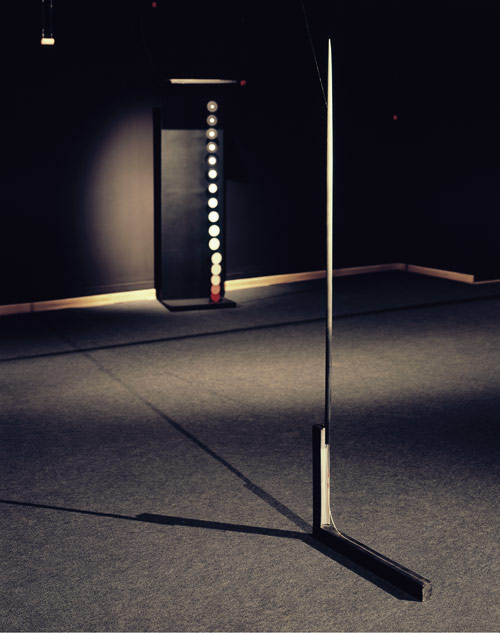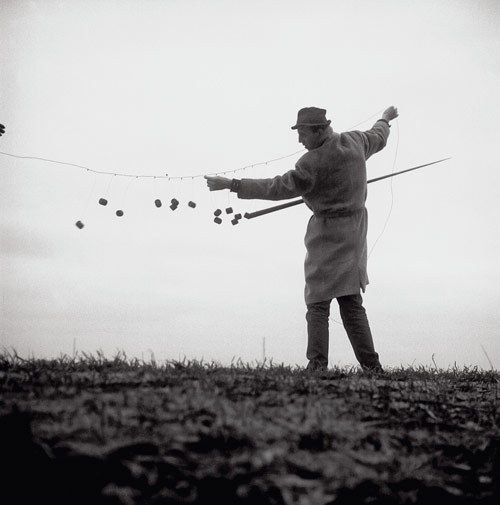1963-1965
Edward Krasiński Photography by Eustachy Kossakowski
Edward Krasiński was both a maker of objects and an actor or performer for the community around him. For most of his life, he lived in Poland, and with his work he always responded to the situation around him – yet he exhibited internationally from the beginning of his career in the 1960s. In the Bienal there are photographs of the artist with his sculptures, and sculptural works from the early part of that decade. The photographs of his actions are very deliberately staged, even if they might seem casual. They show him as a gentle, irreverent figure who was playing with a supposed aristocratic heritage at a time in communist Poland when such actions were not politically welcomed. All the photographs were taken by his friend and collaborator Eustachy Kossakowski, who was close to the Polish avant-garde scene of the time.

As an artist, Krasiński was always seeking to use play and performance as a way to escape the heaviness of his situation, whether in his engagement with art and its materiality, or in his relationship to the authorities. He was fascinated by the potential misuse of everyday objects and sought to transform them into magical configurations, giving them an almost mystical presence.
His objects are some of the oldest artworks in the 31st Bienal. Their delicate, even precarious appearance is woven into the atmosphere of the room itself, with its dark walls and dramatic lighting modulating the simple materials into contemporary talismans. When shown in the mid-1960s for the first time, shortly after being made, they were seen as related to Surrealism, because of their absurdity and playfulness. Fifty years later, in a contemporary context, their apperance might suggest a different state of things, less art historical and more connected to social precarity. Krasiński always struggled against limits and control, and tried to find his own path in art, yet he did not retreat from the world. Through the transformation of conventional materials, he tried to conjure up a new popular imagination that still resonates today. – CE
